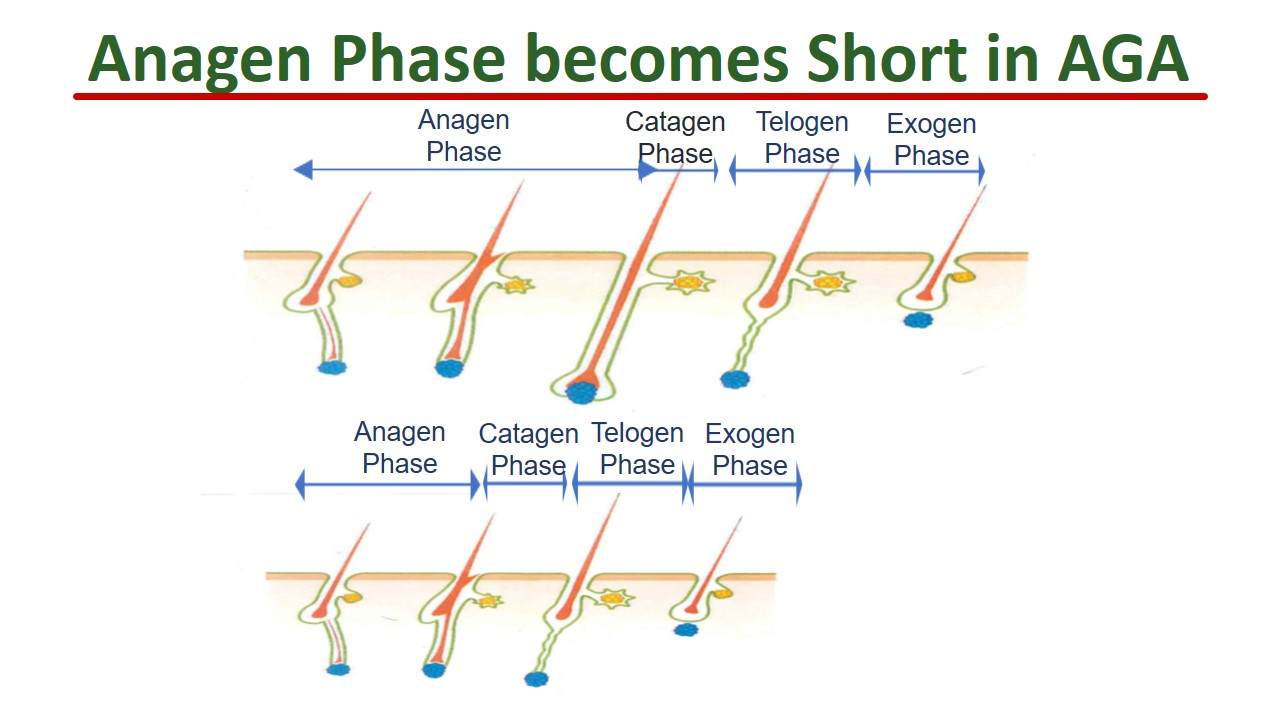
Anagen Phase becomes Short in AGA
Male pattern hair loss (MPHL) is also called androgenetic alopecia (AGA). Female pattern hair loss (FPHL) is also called female AGA.
In patients with AGA, the anagen phase of hair cycle becomes short. It will be shortened up to a few months. It is very short in comparison with a normal anagen phase of 4-6 years.
The duration of the catagen phase, telogen phase, and exogen phase doesn’t change in AGA.
As the anagen phase becomes shorter, scalp hair doesn’t have enough time to grow up to thick and long hair. Thin and short hair stops growing and falls off in AGA.
As the result of the short anagen phase, the rate of thick and long scalp hair decreases and the rate of fine and short hair increases. Thinning of existing scalp hair is fundamental findings of AGA in men and women.
As fine hair doesn’t have enough diameter to cover the scalp, scalp skin becomes visible through the space between fine hairs. This is thinning of hair in MPHL and FPHL.
The surface of human body is covered with fine vellus hair except the palm, sole and lips. It is the same with other mammals. The total number of body hair doesn’t change throughout the life. The total number of scalp hair also remains almost the same through the life.
As the number of thick and visible hair decreases and that of fine and invisible hair increases in AGA, scalp hair looks thin in MPHL and FPHL.
If we investigate scalp hair under a microscope, there remains vellus hair even in the bald area. The total number of scalp hair remains almost the same.











